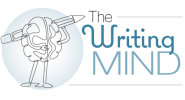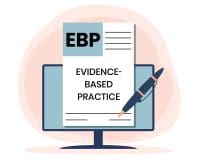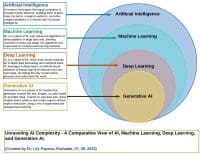Great news: Your article has been accepted for publication! It’s time to celebrate and get ready for the next step in the publishing process—reviewing the edited article.
When that time comes, don’t be surprised to see questions from the editor. These questions, called “queries,” are an essential part of an effective article. The editor is able to look at your manuscript with fresh eyes, catching mistakes you may have missed. The editor also knows the publication’s readers, so can anticipate what they might find unclear or want more information about.
Here’s what you need to know so you can review and answer queries appropriately.
Timing
Most queries come at the initial editing stage, so you’ll see them in a Word document. Supplemental material, such as tables, figures, and sidebars, may be at the end of the document or sent as separate files.
Occasionally, you’ll also see queries once the article is laid out and in PDF form. And if your publication is to be posted on a website, you may receive a URL to the article for review.
The time you have to review the edited manuscript and respond to queries varies depending on the type of planned publication. For a blog, you might have only a few hours. For a journal, you might have 5 to 10 days at the initial editing stage and 2 to 3 days at the PDF stage. For a book or a chapter in a book, you might have 2 to 4 weeks.
Types of queries
Here are 6 types of queries you may see, followed by examples from American Nurse Journal articles edited by Managing Editor Julie Cullen. (“Au” is an abbreviation for author.)
References
These queries can relate to incomplete, incorrect, or missing information. Here are two examples:
- The Joint Commission. Root causes of maternal deaths & injuries. Available from: www.jointcommission.org/NR/rdonlyres/960276C4-1957-4C78-983D-681124E70D1E/0/se_rc_maternal_deaths_inj.jpg //AU: Highlighted URL goes to “page not found.” We’re not able to find an alternative URL.//
- Simpson KR, Creehan PA. Perinatal Nursing Labor and Birth. 4th ed. Philadelphia: Wolters Kluwer Health/Lippincott Williams & Wilkins; 2014. //AU: We’re finding this as Perinatal Nursing (not Perinatal Nursing Labor and Birth) Please verify title.//
- The Joint Commission. Root causes of maternal deaths & injuries. Available from: www.jointcommission.org/NR/rdonlyres/960276C4-1957-4C78-983D-681124E70D1E/0/se_rc_maternal_deaths_inj.jpg //AU: Highlighted URL goes to “page not found.” We’re not able to find an alternative URL.//
Terminology
You may be familiar with terminology or phrasing that readers are not. For example:
With nearly half of healthcare staff reportedly experiencing violence in the workplace, organized mechanisms to address behavioral health emergencies in a trauma-informed manner //Au: I’m not sure readers will know what “trauma-informed manner” means. Please briefly define.// have never been more relevant.
Or, the context of a term may be unclear. For example:
Older adults may deny pain or underreport its characteristics because of ambivalence, //AU: Please clarify what ambivalence means in this context.// fear, a belief that pain is normal for people of their age, or stoicism.
Verification of editing changes
The editor may want to verify that the changes made don’t affect the meaning of the text. For example:
Original
As the QDRS targets common clinical problems such as patient refusal, heightened anxiety, or intense dislike of cognitive testing, family members or frequent observers can complete the QDRS.
Edited
The format of the QDRS helps avoid problems such as patient anxiety with cognitive testing, which can lead to refusal to be tested. The scale also can be completed by family members. //Au: Edit OK?//
Additional text
Editors may suggest additional text to clarify points. For example:
A fixed combination of donepezil and memantine also is available but used less frequently due to its high //AU: OK to add?// cost and inability to adjust the doses of its individual components.
Or, an editor may request that you add additional text. Here are three examples:
- Additional neurologic testing can help to determine if dementia with Lewy body or Parkinson’s disease dementia is responsible for most of the symptoms. //AU: Do you want to provide one or two examples of additional neuro tests?//
- Communication is a significant pain assessment challenge. Consider these strategies to overcome it:
- Develop a rapport and trust with patients.
- Determine patient’s beliefs about talking about pain. //AU: Please provide an example.//
- A step-by-step hierarchical approach is recommended, //AU: recommended by whom?// as is identifying and advocating for the safest management approaches with the least side effects.
Clarification
The editor may ask you to clarify text. Here are two examples:
- The first recognizable symptomatic stage of dementia is called mild cognitive impairment (MCI), which is characterized by subjective complaints of cognitive changes and objective deficits that are detectable during cognitive testing; everyday functioning remains mostly normal. MCI was operationalized //Au: What is meant by operationalized?// in sentinel articles by Petersen and is now widely regarded as a risk state for AD. In recently published practice guidelines.
- Thiazolidinediones. Pioglitazone, a thiazolidinedione, //AU: Only pioglitazone or all thiazolidinediones?// is metabolized entirely by the liver; no dose adjustments are recommended in patients with CKD.
Inconsistencies
The editor may pick up on contradictory information. For example:
This article is limited to primary hypothyroidism. //Au: You use hypothyroidism from now until the treatment section, as opposed to primary hypothyroidism. OK? This implies that the signs, symptoms, screening, complications, and diagnosis are the same for the two types. Or, should we change to primary hypothyroidism?//
Responding to queries
Follow the editor’s instructions for responding to queries. Some will want you to insert comments and use track changes for any revisions you need to make. Others will want you to simply respond in the text, using a different font color, and leaving the query in place. For example:
Editor’s query
Proper training creates a positive environment for volunteers and improves retention. Develop an onboarding program and designate an organization member with the appropriate skills to facilitate it. Do you have reference materials for your volunteer to use to help them execute their role? //AU: Please clarify. Are these reference materials for the person facilitating the onboarding program or reference materials for volunteers?//
Author’s response
Proper training creates a positive environment for volunteers and improves retention. Develop an onboarding program and designate an organization member with the appropriate skills to facilitate it. Create reference materials and how-to guides for your volunteers to refer to as they execute their roles. //AU: Please clarify. Are these reference materials for the person facilitating the onboarding program or reference materials for volunteers?//
Editor’s query
In addition, racial differences found in epidemiological studies are more likely to reflect the effects of racism rather than race itself. The allostatic load//Au: Please clarify meaning for readers unfamiliar with this term// associated with lifelong toxic stress, rather than genetic predisposition, may lead to health disparities.
Author’s response
In addition, racial differences found in epidemiological studies are more likely to reflect the effects of racism rather than race itself. The allostatic load, (the cumulative effects of chronic exposure to stress) //Au: Please clarify meaning for readers unfamiliar with this term// associated with lifelong toxic stress, rather than genetic predisposition, may lead to health disparities.
No matter how you respond, answer promptly to keep your article on its publication path.
Reference
Saver C. Anatomy of Writing for Publication for Nurses, 3rd ed. Indianapolis: Sigma Theta Tau International; 2017.



















